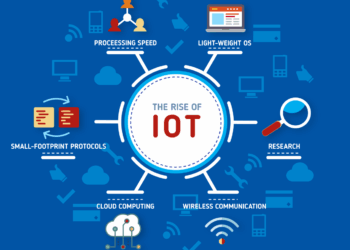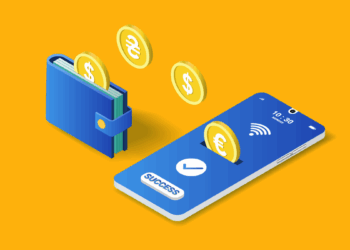The rapid transformation of the digital world has drastically reshaped the global marketplace, and e-commerce stands at the center of this revolution. No longer limited to mere online shopping, the e-commerce industry now encompasses sophisticated technologies, customer-centric platforms, and data-driven strategies that are redefining how businesses operate and consumers interact.
In recent years, e-commerce has evolved from being a convenient option to becoming a necessity for both businesses and shoppers. The driving force behind this transformation is none other than digital innovation. Technologies such as artificial intelligence, big data analytics, mobile commerce, augmented reality, and automation have ushered in a new era for the digital economy.
In this article, we’ll delve into the critical role of digital innovation in the explosive growth of e-commerce. We’ll explore how cutting-edge tools are optimizing operations, enhancing customer experience, and opening doors to endless opportunities.
Understanding E-Commerce in the Digital Era
E-commerce, or electronic commerce, refers to the buying and selling of goods or services through electronic networks, primarily the internet. While the concept has been around since the 1990s, the landscape has seen monumental changes over the past decade.
Digital technologies have made e-commerce more accessible, scalable, and profitable. Entrepreneurs can now launch online stores without the need for physical infrastructure, and consumers can shop anytime, anywhere, from any device.
Key Drivers of E-Commerce Growth
A. Mobile Commerce (M-commerce)
The widespread use of smartphones and tablets has significantly influenced e-commerce. Mobile commerce, or m-commerce, allows users to shop directly from their devices, enabling a seamless and fast shopping experience.
Benefits of M-commerce include:
-
Enhanced user convenience
-
Location-based marketing strategies
-
Mobile-friendly interfaces
-
Instant access to digital wallets and secure payment gateways
With the rise of 5G networks and responsive design, businesses are investing more in mobile-first strategies, ensuring their websites and apps deliver top-notch experiences.
B. Artificial Intelligence and Machine Learning
AI and ML technologies have become fundamental tools in understanding consumer behavior, personalizing experiences, and automating business processes.
AI is revolutionizing e-commerce by:
-
Offering product recommendations based on user preferences
-
Powering intelligent chatbots for 24/7 customer support
-
Detecting fraudulent transactions and improving security
-
Streamlining inventory and supply chain management
AI not only increases operational efficiency but also enhances customer satisfaction, boosting retention and loyalty.
C. Big Data and Predictive Analytics
Data is the new currency in the digital world. E-commerce companies collect massive amounts of consumer data to better understand shopping patterns, forecast trends, and create targeted marketing campaigns.
With big data, businesses can:
-
Personalize marketing messages and emails
-
Optimize pricing strategies
-
Improve product development and sourcing
-
Track and analyze customer journeys
Predictive analytics also helps companies anticipate demand, manage stock levels, and reduce waste, thus increasing profitability.
Transforming Customer Experience Through Innovation
Customer experience (CX) has become the cornerstone of successful e-commerce strategies. Digital innovations have made it possible for businesses to create hyper-personalized, seamless, and memorable experiences that go beyond simple transactions.
A. Augmented Reality (AR) and Virtual Try-Ons
One of the most exciting advancements in e-commerce is the use of augmented reality. It allows shoppers to visualize products in real-world settings before making a purchase.
Examples include:
-
Virtual fitting rooms for apparel and accessories
-
3D furniture previews in home environments
-
AR-enabled makeup trials
By reducing uncertainty, AR improves customer confidence and decreases product returns.
B. Voice Commerce
Voice assistants like Alexa, Google Assistant, and Siri are changing the way people shop online. Voice commerce enables users to search, order, and pay using voice commands.
Advantages of voice commerce:
-
Hands-free convenience
-
Faster product discovery
-
Personalized shopping lists and reminders
As natural language processing (NLP) improves, voice commerce will become a critical part of the e-commerce ecosystem.
C. Chatbots and Conversational AI
Gone are the days when customers had to wait for hours to get assistance. Chatbots, powered by conversational AI, provide instant, intelligent responses that mimic human interaction.
Chatbots are useful for:
-
Answering FAQs
-
Guiding users through the checkout process
-
Offering real-time shipping updates
-
Upselling and cross-selling products
The use of AI-driven bots not only saves time and costs but also increases engagement and conversion rates.
Seamless Payment and Checkout Solutions
Digital innovation has also transformed payment methods, reducing friction and improving security in the checkout process.
A. Digital Wallets and Contactless Payments
Payment systems like PayPal, Apple Pay, Google Pay, and various regional wallets offer consumers faster and safer transactions. These solutions are especially popular in mobile commerce.
B. Buy Now, Pay Later (BNPL) Services
BNPL platforms like Klarna, Afterpay, and Affirm are gaining traction, offering consumers flexible payment options. This encourages more purchases and lowers cart abandonment rates.
C. Cryptocurrency in E-Commerce
Some online retailers now accept Bitcoin and other cryptocurrencies as valid forms of payment. While still in its early phase, crypto adoption in e-commerce reflects the broader shift toward decentralized finance.
Logistics and Supply Chain Digitization
Efficient logistics are crucial for e-commerce success. Digital innovation has streamlined the entire supply chain—from order fulfillment to last-mile delivery.
A. Real-Time Tracking
Modern tracking systems allow customers to monitor their package journey from warehouse to doorstep, increasing transparency and trust.
B. Warehouse Automation
Automated warehouses use robotics and AI to manage inventory, pick items, and pack orders quickly and accurately.
C. Drones and Autonomous Delivery Vehicles
Innovative companies are experimenting with drone and robot deliveries, aiming to shorten delivery times and reduce human intervention.
Social Commerce: The Intersection of Social Media and E-Commerce
Social media platforms like Instagram, Facebook, TikTok, and Pinterest are no longer just for entertainment—they’ve become powerful selling tools.
Key features of social commerce:
-
Shoppable posts and stories
-
Influencer-driven product promotions
-
In-app checkouts
Social commerce enables brands to engage with customers in more organic, authentic ways, leading to higher trust and sales.
Personalization and Customer Retention
One-size-fits-all approaches no longer work in today’s e-commerce landscape. Businesses that tailor experiences and content to individual preferences see higher engagement and conversion rates.
A. Behavioral Segmentation
By analyzing user behavior, e-commerce platforms can categorize customers and offer relevant content, products, and discounts.
B. Email Automation and Dynamic Content
Smart email campaigns based on user interactions help re-engage customers, encourage repeat purchases, and reduce churn.
C. Loyalty Programs and Gamification
Rewarding customers through loyalty points, gamified experiences, or exclusive offers builds long-term relationships and boosts lifetime value.
Security and Trust in Digital Transactions
Security remains a top priority in e-commerce, especially as cyber threats evolve. Digital innovation has introduced more robust solutions to protect both businesses and consumers.
A. Secure Payment Gateways
Modern payment processors use encryption and tokenization to ensure transaction data is safe.
B. Multi-Factor Authentication (MFA)
Adding layers of verification, such as SMS codes or biometric scans, increases account security.
C. Transparent Return Policies and Reviews
Earning customer trust also involves providing clear policies and showcasing authentic reviews to validate product quality and service.
The Future of E-Commerce: What Lies Ahead?
As technology continues to evolve, the future of e-commerce looks incredibly promising. Here are some trends that are expected to dominate the next wave of innovation:
A. Hyper-Personalization Using AI
AI will continue to deliver even more accurate personalization, offering product suggestions, tailored promotions, and immersive customer journeys.
B. Sustainable and Ethical E-Commerce
Consumers are increasingly drawn to brands that prioritize eco-friendly packaging, ethical sourcing, and social responsibility. Digital tools help companies track and report sustainability metrics.
C. Web3 and Decentralized Marketplaces
With the growth of blockchain and Web3, we may see the rise of decentralized e-commerce platforms that offer greater privacy, ownership, and direct-to-consumer connections.
D. Immersive Virtual Shopping Experiences
Metaverse-style stores could allow shoppers to walk through virtual aisles, interact with avatars, and make purchases in 3D environments.
Conclusion
E-commerce has come a long way from its early days, and digital innovation is at the heart of its remarkable growth. From AI and mobile commerce to augmented reality and blockchain, technology continues to push the boundaries of what’s possible.
Businesses that embrace these innovations are better positioned to thrive in an increasingly competitive landscape. More importantly, they’re able to meet the ever-evolving demands of today’s digital-savvy consumers.
As we look to the future, one thing is clear—e-commerce and digital innovation will remain deeply intertwined, driving progress, efficiency, and unmatched customer experiences for years to come.














